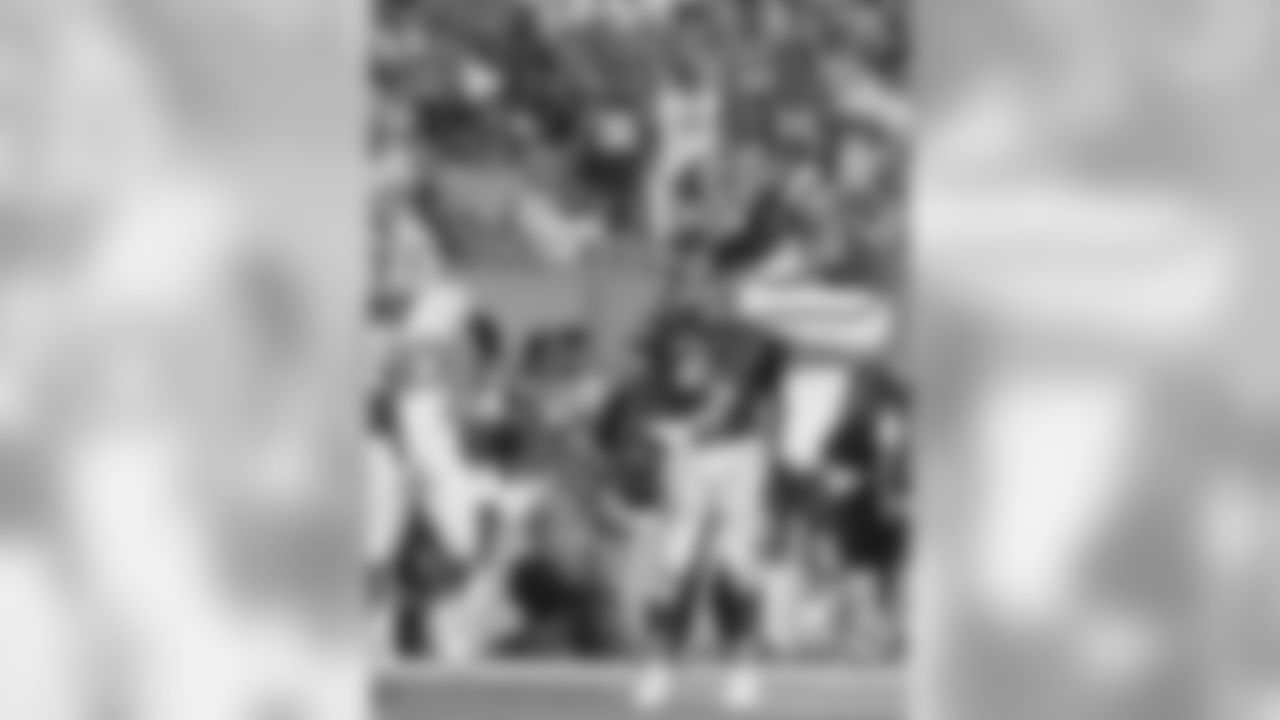The numbers always seem a little sweeter after a victory.
Just like we've done every other week, let's take a closer look at the Chiefs offense in their 34-15 victory over the Dolphins last Sunday.
Starting with the basics
The Chiefs had 342 yards of total offense, with 174 on the ground and 168 through the air.
Second-year running back Knile Davis led the Chiefs with a career-high 32 carries for 132 yards and one touchdown.

Quarterback Alex Smith finished 19 of 25 for 186 yards and three touchdowns, accumulating a passer rating of 136.
In the receiving game, the Chiefs were also led by a running back in Joe McKnight, who hadn't scored a touchdown in his three NFL seasons prior to Kansas City, but hauled in two touchdown passes on Sunday. McKnight finished with six receptions for 64 yards and the two touchdowns.
Travis Kelce continued to show why he's one of the up-and-coming stars in the NFL at the tight end position, catching three passes for 36 yards and turning some heads while doing it.
Late in the first half on third-and-2 from the Dolphins 20-yard line, Kelce took a short pass from Smith, turned upfield, fought his way to the front corner pylon and dove in for the touchdown, which gave the Chiefs the 14-0 lead.
Later in the game, Kelce attempted to jump over a Dolphins defensive back to no avail, but he looked good trying and showed the kind of athleticism that's helped him become a definitive playmaker for the Chiefs offense.
The Chiefs converted 9 of 16 third downs and one on fourth down, and they finished 3 of 3 in the red zone, an area they came into the game wanting to improve.
Different personnel groups
The Chiefs used six different personnel groups in this game, which means a different combination of receivers, running backs and tight ends.

There are almost always five offensive linemen (goal line or short yardage can see an extra OL brought out) and a quarterback, which leaves five positions open for "skill position players."
The different combination of receivers, running backs and tight ends are used to find mismatches against specific defensive looks. Coaches try and find the best possible matchup they can with these five players against how the defense will counter based on down and distance, score and field position.
Defenses adjust their personnel based on these five players on the offense. They might bring out extra linebackers, safeties or cornerbacks. It all depends on what combination the offense sends on the field.
This is the chess match that coaches play and it varies from week to week because the personnel they go up against changes as well. These numbers can't be seen as a projection moving forward, or an explanation of how things should work, but more like simply how this particular game played out.
The Chiefs offense ran 71 plays against the Dolphins.
The most popular group of the day was "12" personnel, meaning they had one running back, two tight ends and two receivers on the field.
(The "personnel numbers" explained – First number is # of running backs, second is # of tight ends, difference from five is # of WRs, so "12 personnel" means ONE running back (12), TWO tight ends (12) and TWOreceiversbecause the combination of running backs and tight ends istwo shortof makingFIVE *total)*
*
Photos from the Chiefs week three match up against the Miami Dolphins.



































































































*
In "12" personnel, the Chiefs called 13 pass plays and completed 9 of 12 for 94 yards, with one of the five sacks on the day coming from this grouping. They ran the ball seven times for 19 yards.
Although this "12" personnel grouping was the most popular of the day, the Chiefs only ran it 28 percent of the time.
That's because they did a great job of mixing up their personnel groups against the Dolphins defense. They used five different personnel groupings for at least 10 plays each during the game.
The Chiefs ran "11" personnel 15 times, "13" personnel 13 times, "21" personnel 10 times and "22" personnel 12 times. They also ran one formation with two tight ends and three receivers, which resulted in a 12-yard completion to receiver Junior Hemingway.
The Chiefs use of three tight ends on the field together on 13 different plays is what really stands out when looking at these numbers. They ran it 10 times out of this group and picked up 62 yards, but they also threw it three times, completing two passes for 35 yards.
This is the statistical data to back up what coaches have been saying about Anthony Fasano, Travis Kelce and Demetrius Harris since training camp. They all have skills that belong on the field, and they would try and find ways to utilize each of their abilities.
With so much success in the running game with those three players on the field together, defenses have to adjust and respect that. This could open things up in the passing game, and their athletic ability in space creates mismatches as well.
The Chiefs offense had 14 plays of at least 10 yards against the Dolphins, and 10 of them came in either "12" or "13" personnel.
Now these successes don't just come from the individual players. They are set up throughout the game by down and distance, tendencies, score and field position. But coach Reid found the right formula for getting the most out of his tight ends when they were on the field together against the Dolphins.

According to Pro Football Focus, Alex Smith was blitzed (sending five or more defenders) 12 times in this game. Four of the Dolphins five sacks in the game came on blitzes, but Smith completed 6 of 8 for 52 yards and two touchdowns against the blitz.
While sacks are never good, sometimes not forcing the throw is also the right move in that situation, especially when you have a punter like Dustin Colquitt, who along with the punt-coverage unit, had a net average of 48.8 yards per punt, compared to 32.4 for the Dolphins.
The Chiefs flipped the field position battle throughout the game and forced the Dolphins to go the length of the field to score against them. The only touchdown the Dolphins had in the game came on a 19-yard drive after the Chiefs turned it over to them in the red zone on a fumble.
That turnover was followed up by the momentum-changing drive of the game, during which Smith and the Chiefs offense drove 66 yards on 10 plays, ending with McKnight's first touchdown reception to extend the Chiefs lead to 21-10. Four of the last five plays on that drive gained at least 10 yards.
Normally when you have good numbers on third down and in the red zone, the offense has been successful and there's a good chance you'll win the game.
Hopefully the Chiefs can continue the upward trend against the New England Patriots on Monday Night Football.
We'll know more later in the week as to whether or not they'll have running back Jamaal Charles or rookie De'Anthony Thomas back on the field for this game.













